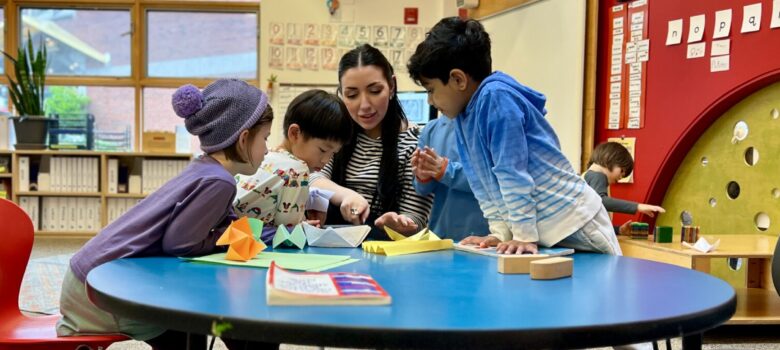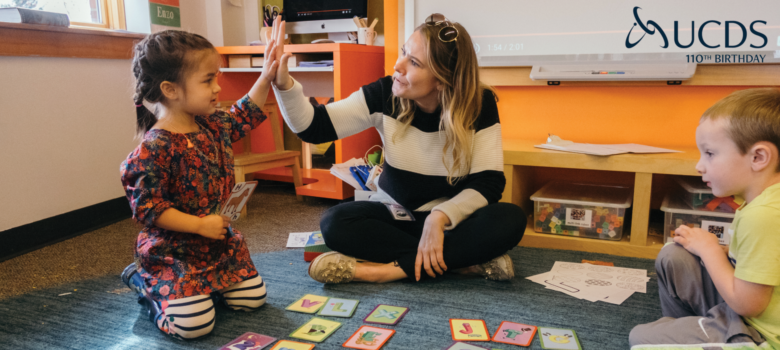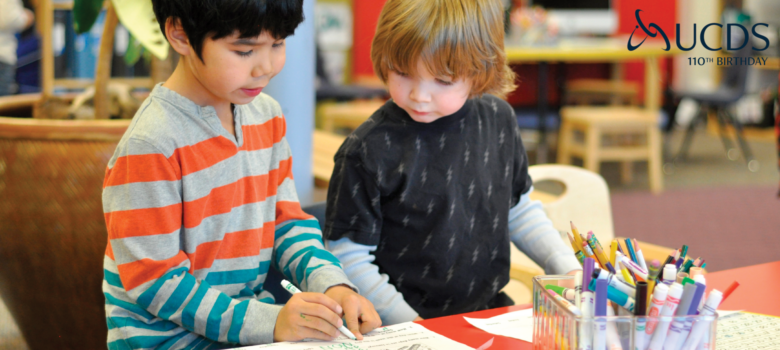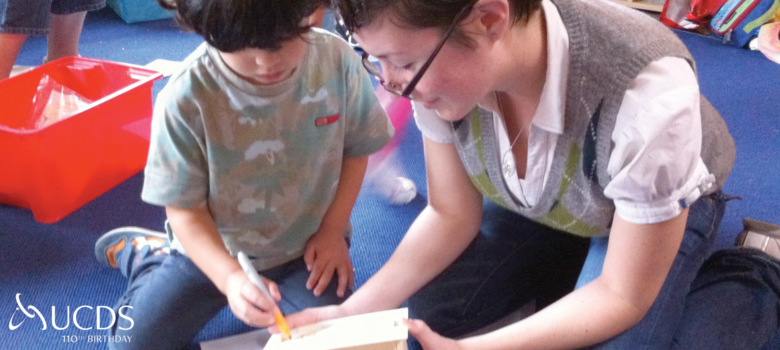This week we’re also featuring a piece written by one of our most experienced teachers and leaders at UCDS, 3-4-5 Grade Division Head and 5th Grade Teacher David Garrick. Today’s entry is a focus on student voice and publishing efforts in the fifth grade. -Ed.
_________
Student voice is highly valued at UCDS and student interests are at the center of our curriculum design, the structure of our days, and what we communicate about the school. For a number of years, a few fifth-grade students wrote blog entries in attempt to provide authentic, first-hand accounts about their experiences at school. While well-received, these pieces were intensive efforts that took a great deal of time and support to publish.
As we designed for the 2016-17 school year a few opportunities came to light. In May of 2016 Adobe launched the Adobe Express group of web apps. Express provides a range of easy-to-use tools for everyday communications that students use to create visual content to engage a wider audience and allow for greater autonomy for students to produce. Additionally, UCDS decided to try a new grade-level structure that created a stand-alone fifth grade. Among the impacts of our level restructuring was a re-design of the daily schedule and creation of an advisory period. This allowed for fifth-graders to meet daily and coordinate with teachers and students throughout the school. They use this time to coordinate Service Learning Project responsibilities and also to find out and report on happenings throughout the school. With new technological tools and a schedule that supported daily attention to the project, the student blog was ready for a re-launch.
Our first logistical hurdle presented itself right away. In order to manage fifteen or more simultaneous work groups and allow access for our young students – Adobe Express requires users to be thirteen in order to have an account – we created a single user that all students would use together. Adobe Express allows for simultaneous logins to a single account making this hurdle easy enough to clear. Next, we had to address how to manage fifteen simultaneous projects. Adobe Express organizes projects by most recent and puts all of the different types in one screen. Without a way to organize projects into groups or folders, we devised a file-naming protocol that allowed teachers and students to identify a single project from the matrix of student work.
Managing the overall workflow became the next hurdle. To create accountability for reporting about the variety of student experiences, students were assigned beats. Each beat incorporated different student ages and areas of the school program. In all, we created thirteen different beats covering everything from the playground to the library. Each beat was then further divided by grade-level creating fifty-two different lenses for reporting about life at UCDS. To communicate between multiple teachers about student progress, we organized the beats into a single, shared spreadsheet. Blog assignments were color-coded to indicate its stage in production. Finally, teachers coordinated with our Director of Communications to publish finished blogs to the school website. This management structure allowed students to work at various paces and publish organically as they completed each blog. So far this year, students completed over forty blog entries highlighting student life in every aspect of the school.
Through our Director of Communications, we shared our efforts with members of the Adobe Express team and students were invited to the Adobe campus in Seattle’s Fremont neighborhood for a meeting. Students and teachers gave feedback about our experience this year including what worked well, criticisms, and wishes for future improvements to the program. Students toured the campus and asked questions about work-life at Adobe, mostly concerning the summer wiffleball league.
The student blog project represents much of what makes UCDS the incredible and dynamic school that it is. Teachers collaborate to build on the work that has come before. We pioneer with new tools and problem-solve to clear each hurdle. We design student experiences that encourage autonomy, creativity and mistakes. The result of this effort is a new and dynamic form of student-led communication. One that will continue to evolve and improve in years to come.
Check out a few examples from the Student Blog:
Third and Fourth Grade Writing





